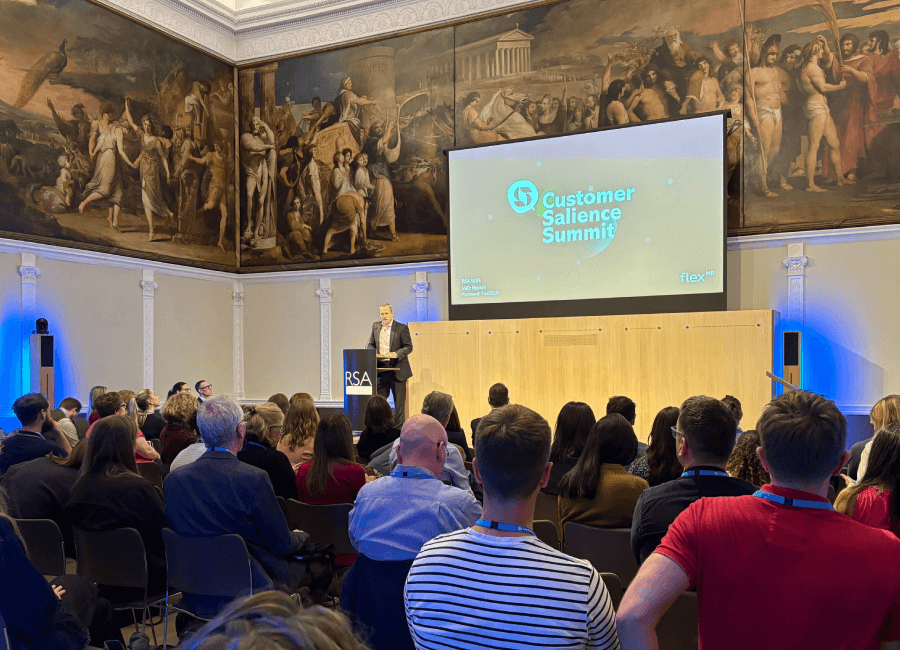Why do decision-makers need to turn insight into action? Research, at least in the commercial world, is not an end to itself. Neither, I’m afraid, are insights. They won’t make your business money, change your place in the competitive landscape or help you better meet the needs of existing customers. In order to do that, the business needs to take action on the basis of those insights.
It’s all very well spending months planning and executing a piece of research, analysing the findings then dutifully reporting it to a handful of stakeholders when all that is left is a coffee cup stained PowerPoint slide printout gathering dust on the lower strata of a mid-level manager’s desk.
This was very much the problem of the old school of commissioned ‘waterfall style’ market research projects: by the time the research had been briefed, planned, carried out, analysed and reported, the key time to feed into strategic decision making would often have passed and the sponsors may have moved on to other projects (or even pastures new!).
If the insights emerging from research don’t get embedded into the organisation at all levels, from the tactical to the strategic, the value of having undertaken the research in the first place is questionable.
| Tweet This | |
| Embedding insights into organisations can be tricky with the challenges stakeholders face, but we have the technology to help. |
The Challenges
In order for insights to be taken on board across the business, our CEO, Paul Hudson, outlines 3 key challenges: efficiency, reach and influence.
Efficiency: Traditionally, data from multiple methods of research conducted by a host of different suppliers was melded together and then analysed using various analysis tools. This led to a high degree of inefficiency. To make research happen across the business, it needs to be able to happen at pace and at cost.
Reach: Going back to the example I started this blog with, if insight is only seen by the research team or one or two individuals, they will never be acted on by the business. Insights need to be accessible and used across the business in order for them to be actionable.
Influence: Even if reach and efficiency are aligned, for insights to be actionable, stakeholders across the organisation need to feel empowered to understand and act on insights.
The Role of Technology
Fortunately, increasingly technologies such as InsightHub can help to make insights much more actionable.
Integration
By using a tool with a range of research methods and analysis tools in one place, you can ensure that data is in the right format for your analysis from the start and save time that might otherwise have been spent stitching together databases, survey tools and analysis tools. This means you can spend much more time asking questions of your data and less time on the mechanics of data gathering and analysis.
Tech takeaway: When the same database is used for research and analysis from the start, you can be sure that your data is in the right shape to easily manage the research process from end to end.
Ease of sharing
Using an online research tool which allows for the easy distribution of findings across an organisation, and enables stakeholders to see live updated data and make it interactive so that they can ‘play’ with the data. This means that not only will your insights increase their reach across the organisation, those insights will become more ‘sticky’ from the desire of stakeholders to keep checking back to view updates in real time.
Tech takeaway: Links with tokens (with access controls so that you can control the period of time sharing links are available for, for example) help share findings without stakeholders needing to log in.
| Tweet This | |
| With challenges ranging from the integration of insights to creating ways for stakeholders to engage with them, discovering the right technology to help is crucial. |
Curation
Online insight tools can help research, product and stakeholder teams knit together the findings that are important for the projects they are working on to present to stakeholders and colleagues from across a range of qualitative and quantitative research tools. Many tools offer the ability to tag and favourite key quotes and statistics.
Tech takeaway: Systems that help you tag, organise and filter insights to then present are worth their weight in gold.
Consensus-building
By allowing for in-situ dialogue around findings, researchers and stakeholders can work together to tease out key insights and more importantly decide what to do about them. Discussion between stakeholders from across the business can lead to a variety of perspectives, and importantly, also engages teams with the research and a desire to do something about the outcomes.
Tech takeaway: Online discussion tools with push notifications and calls to action can help keep stakeholder discussions and collaborations live.
The Next Turn
And so we come to the important part - what to do next?. This is not, however, the easy part, as anyone who has struggled to write up a slide of recommendations to book end a research report and then seen them not go anywhere will know. Fortunately, there a number of ways technology can help you to move forward quickly so that you don’t lose momentum:
- Spin up new online research tasks to dig into key areas in more depth
- Create a meeting request with key stakeholders to plan next steps
- Request sample from a sample provider
- Link to Tweet about insights
- Automatically post to the company Slack channel
These are just some of the possibilities we are exploring as we build out our new ActivateMR tool, but there are many solutions that would help you with some aspects of turning your insights into activation and making sure your research makes a difference through your organisation.


















